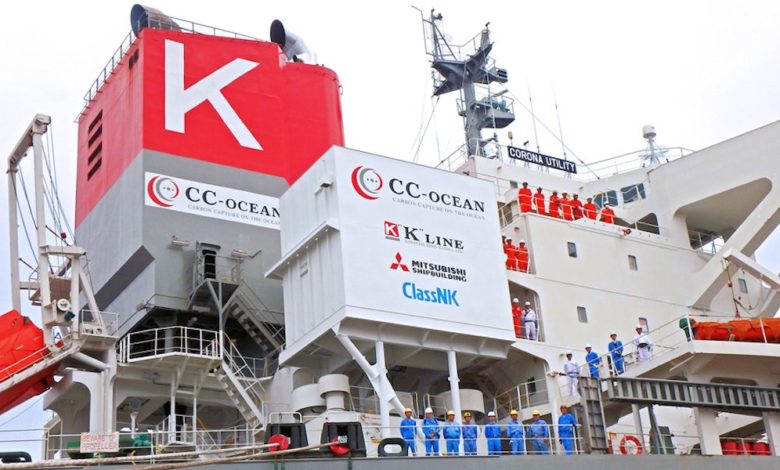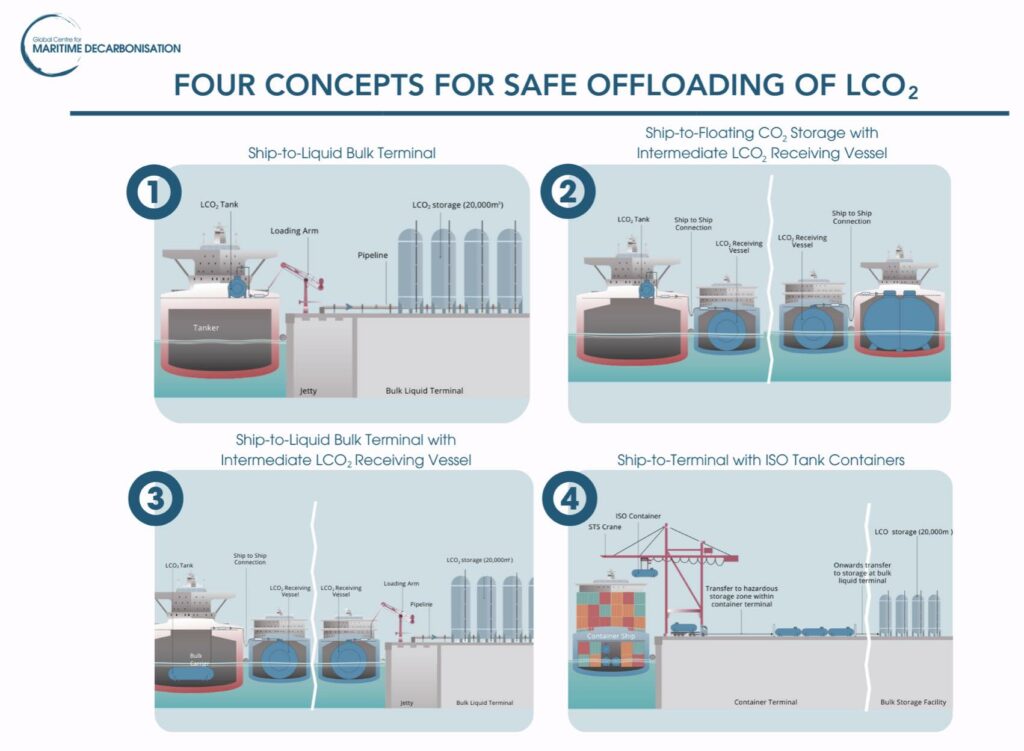Study finds ports are not ready to handle onboard captured carbon dioxide

A recent study commissioned by the Global Centre for Maritime Decarbonisation (GCMD), in collaboration with Lloyd’s Register and Arup, has identified low port readiness as a major hurdle bottlenecking the adoption of onboard carbon capture and storage (OCCS) systems as a practicable decarbonisation solution. Whilst the technologies required for offloading onboard captured CO₂ exist at high levels of maturity, safe operationalisation of captured CO₂ transfer by trained personnel has not been demonstrated, the 400-page study claims.
The report found that while a limited number of ports possess the infrastructure to offload liquefied CO₂ (LCO₂), they are primarily designed to handle food-grade CO₂. The higher purity standards that accompany this use limits the interoperability of facilities to handle onboard captured CO₂.
The study examined over ten planned LCO₂ related infrastructure projects worldwide. Located near, or with transport links from, CO₂-emitting industrial clusters, these projects are likely to handle much larger volumes of captured CO₂ than that from OCCS systems; port infrastructure needed for offloading, storing and transporting onboard captured CO₂ will likely need to be integrated with these projects for economies of scale. However, as many of such projects remain in concept phase and have not reached final investment decision (FID), ports have not proceeded with offloading infrastructure investments. This chicken-and-egg dilemma highlights the overall infancy of the carbon value chain.
Furthermore, introducing LCO₂ offloading into already complex port operations will likely impact port efficiency and operational performance. The need for additional buffer zones to address the safety concerns of LCO₂ handling and storage will also add to existing space constraints at ports and terminals.
The study determined that captured CO₂ in its liquefied form is likely the most efficient and cost-effective option for onboard storage and transport. Based on this, the study shortlisted four concepts covering key offloading modalities (see infographic below), such as ship-to-ship and ship-to-shore, serving as building blocks that can be combined to cover a wider range of offloading concepts.
In ranking the operability of these concepts, the study identified ship-to-ship and ship-to-shore transfers using an intermediate LCO₂ receiving vessel as the most promising modalities for offloading at scale, with captured CO₂ eventually sequestered or used as feedstock for manufacturing synthetic fuels.
Ship-to-terminal transfer of captured CO₂ stored in ISO tank containers was identified to be more compatible at smaller scales and for end uses that require higher grades of CO₂. This modality of transfer is also most compatible with existing port infrastructure and therefore easier to pilot today.

